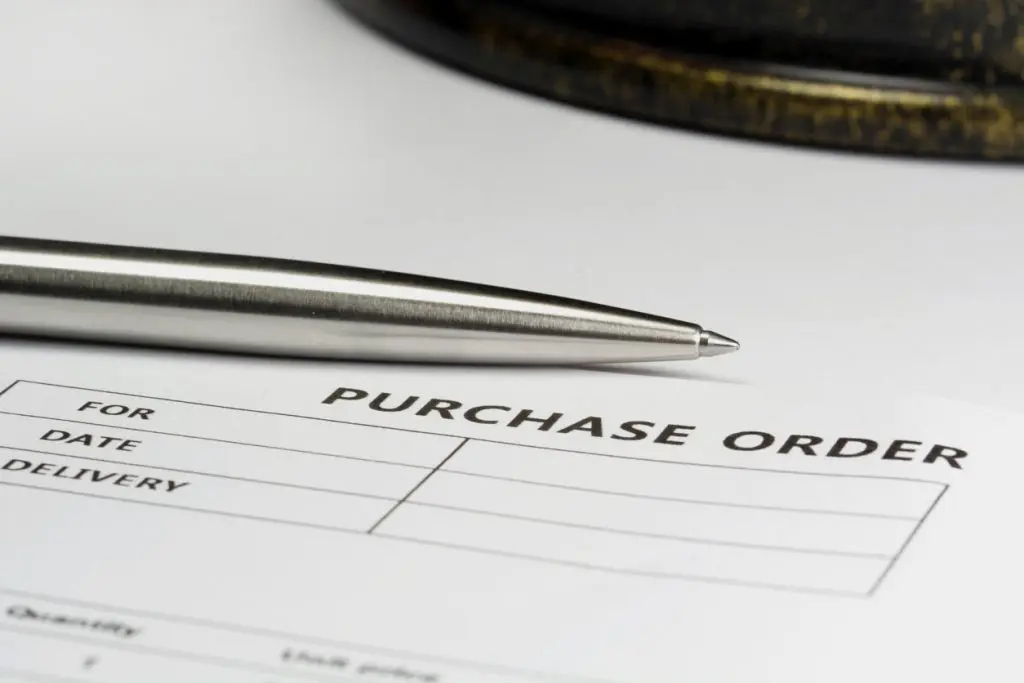Change reigns supreme in modern-day business operations, making accurate inventory tracking an essential for successful operations. It allows companies to optimise supply chains, reduce costs, and meet customer demands by providing real-time insights into stock levels and movement. Effective inventory tracking ensures the right balance of stock, preventing excess inventory or stockouts. Leveraging modern technologies and data analytics, inventory tracking has evolved into a sophisticated process, offering businesses greater visibility, better decision-making, and improved profitability in the face of global supply chain challenges.
What is Inventory Tracking?
Inventory tracking is the process of systematically monitoring the quantity, location, and status of a company’s inventory throughout its lifecycle. It involves keeping accurate records of stock levels, movements, and transactions. While inventory tracking focuses on recording data, inventory management covers broader activities like demand forecasting, setting reorder points, and optimising stock levels. Inventory tracking provides the essential data that supports inventory management decisions. For example, in retail, tracking records sales and stock levels, while management uses this data to plan restocking and promotions.
Importance of Inventory Tracking
Inventory tracking is crucial for modern businesses, impacting efficiency, cost management, decision-making, and customer satisfaction. It enhances operational efficiency by providing real-time visibility into stock levels, reducing overstocking and stockouts, and streamlining order fulfillment. Effective tracking lowers costs by preventing overordering and underordering, and helps businesses identify slow-moving items. It also supports better decision-making through data on inventory levels and movement patterns, improving purchasing and production planning. Additionally, it aids in loss prevention by identifying discrepancies and enhances demand forecasting. For regulated industries, inventory tracking ensures compliance with safety and quality standards.
Learn how Intuendi empowers businesses towards reducing stockouts and increasing sales.
Types of Inventory Tracking Systems
As businesses evolve, various inventory tracking systems have been developed to cater to different industries and operational scales. These range from traditional manual methods to advanced automated solutions utilizing modern technologies. Choosing the right system is essential for businesses to meet their specific needs effectively. Understanding the available options helps businesses optimise their inventory management processes.
Manual Inventory Tracking
Manual inventory tracking involves physical counts and record-keeping using methods like pen and paper or spreadsheets. While basic, these methods are suitable for small businesses with limited inventory or high-value items. The simplicity and low cost make manual tracking appealing, but it’s time-consuming, prone to human error, and lacks real-time visibility. As inventory volume increases, this method becomes inefficient and lacks scalability. Despite its limitations, manual tracking can still be valuable as a backup system or for cross-checking automated systems.
Automated Inventory Tracking
Automated systems use software and hardware to streamline inventory management, offering real-time updates, barcode or RFID scanning, automatic reordering, and advanced analytics. These systems dramatically reduce manual labour, improve accuracy, and provide real-time visibility, enabling better decision-making. However, they require a significant initial investment, training, and potential data migration challenges. Despite these hurdles, automated inventory tracking is essential for growing businesses, providing long-term efficiency and competitiveness.
Empower your decisions with Predictive Analytics.
RFID-Based Inventory Tracking
RFID technology offers highly efficient inventory tracking by using radio waves to track tags on inventory items. It improves accuracy, speeds up processes, enables real-time tracking, and enhances visibility across the supply chain. Industries like retail, manufacturing, and healthcare benefit from RFID’s efficiency and loss prevention capabilities. However, the high implementation cost and environmental interference challenges are considerations. Despite these, RFID is becoming increasingly attractive for businesses aiming to optimise inventory tracking.
Barcode-Based Inventory Tracking
Barcode systems are a reliable, cost-effective method for tracking inventory. Barcodes, when scanned, provide quick and accurate data on stock levels, improving accuracy and efficiency compared to manual methods. While barcodes are cost-effective and widely used in retail and warehouses, they require line-of-sight scanning, are time-consuming for large inventories, and are susceptible to label damage. Despite these limitations, barcode tracking remains a popular solution, particularly for small and medium-sized businesses transitioning from manual methods.
IoT and Smart Inventory Tracking
IoT-based inventory tracking utilises interconnected sensors and data analytics to provide real-time visibility and control over inventory. This advanced system enables predictive analytics, automated replenishment, environmental monitoring, and supply chain visibility. Integration with AI, machine learning, and blockchain enhances its potential. However, challenges such as data security, initial investment, and implementation complexity exist. As the technology evolves, IoT will likely play a critical role in optimising inventory management across industries.
Key Components of Inventory Tracking Systems
Effective inventory tracking systems consist of several crucial components that enhance inventory management and decision-making capabilities.
Inventory Management Software
Inventory management software automates the tracking and control of inventory, offering features like real-time updates, automated reordering, and advanced analytics. These systems provide continuous visibility into stock levels, preventing overstocking or stockouts and ensuring efficient operations. Integration with other business tools like point-of-sale systems and e-commerce platforms further enhances efficiency, while customisable reports and analytics enable data-driven decision-making.
Tracking Devices and Sensors
Tracking devices and sensors, such as barcode scanners, RFID readers, IoT sensors, GPS trackers, and Bluetooth beacons, provide real-time data and improve inventory accuracy. Barcode scanners and RFID readers streamline inventory tracking by quickly capturing product data, while IoT sensors monitor environmental factors like temperature and humidity. GPS trackers help monitor shipments, and Bluetooth beacons support indoor tracking. These devices enhance visibility, reduce human error, and improve operational efficiency across the supply chain.
Data Analytics and Reporting Tools
Data analytics and reporting tools are essential for transforming raw data into actionable insights. These tools analyse inventory trends, forecast demand, and identify inefficiencies, allowing businesses to optimise stock levels and improve supply chain performance. Advanced reporting tools, such as Tableau, Power BI, and Qlik Sense, visualise data through customizable dashboards, helping decision-makers access real-time information on inventory turnover, order fulfilment, and stock discrepancies. This enables more informed, proactive inventory management and strategic planning.
Implementation of Inventory Tracking Systems
Implementing an inventory tracking system can significantly enhance a business’s operations, improving efficiency, reducing costs, and supporting better decision-making. However, the process requires detailed planning, execution, and ongoing management to ensure success.
Steps to Implement an Inventory Tracking System
The implementation begins with assessing current inventory practices, identifying strengths, weaknesses, and setting clear goals. After evaluating and selecting the right system, businesses must train staff to ensure smooth usage. System deployment involves migrating existing data, minimising disruptions by possibly running the old and new systems in parallel. Finally, continuous monitoring and adjustments are necessary for system optimisation and addressing any issues that arise.
Choosing the Right Inventory Tracking Solution
Selecting the right solution depends on several factors: scalability to grow with the business, ease of use to minimise learning curves, integration with existing systems like ERP or POS, and cost considerations. Security features are vital for protecting sensitive data, while reliable customer support ensures smooth operation and problem resolution.
Common Challenges in Implementation
Challenges during implementation include employee resistance, data migration complexities, integration with existing systems, and budget constraints. Resistance can be mitigated by involving staff early and providing thorough training, while careful planning can help manage data accuracy during migration. Ensuring seamless integration and ongoing system maintenance is crucial for long-term success.
Best Practices for Successful Implementation
Successful implementation requires thorough planning, clear communication, and effective training. Phased implementation can ease the transition, while dedicated teams help oversee the process. Regular monitoring and evaluation ensure that the system continues to meet business needs, promoting efficiency and accuracy in inventory management.
Benefits of Effective Inventory Tracking
Implementing an effective inventory tracking system brings numerous benefits, improving accuracy, reducing costs, enhancing customer satisfaction, and supporting better decision-making.
Improved Accuracy and Efficiency
Effective inventory tracking reduces errors and enhances operational efficiency by using automated systems like barcode scanners and RFID readers. These systems provide real-time data, minimising human error and streamlining processes like stock counting and order fulfilment. With real-time insights, businesses can optimise their inventory turnover, reducing time spent on manual tasks and improving overall supply chain efficiency.
Cost Reduction
Proper inventory tracking helps reduce overstocking and wastage, leading to significant cost savings. Advanced tracking systems ensure businesses maintain optimal stock levels, reducing storage costs, avoiding product obsolescence, and reducing the need for costly emergency orders. Automated systems also lower labour costs by reducing manual tasks like data entry and stock counting.
Enhanced Customer Satisfaction
Accurate inventory tracking ensures that businesses have the right products available, reducing stockouts and enhancing the customer experience. Efficient tracking systems enable faster order fulfilment and delivery, which boosts customer satisfaction and loyalty. Additionally, businesses can anticipate demand more effectively by analysing customer preferences, ensuring they are ready to meet customer needs, especially during peak times.
Better Decision-Making
Inventory tracking provides valuable data that supports data-driven decision-making. Businesses can leverage this information to improve demand forecasting, optimise inventory levels, and make informed supply chain decisions. By analysing trends and supplier performance, businesses can enhance profitability, streamline operations, and make strategic decisions that contribute to long-term growth and efficiency.
Technologies in Inventory Tracking
Various technologies are transforming inventory tracking, enhancing efficiency and accuracy.
Radio Frequency Identification (RFID) uses electromagnetic fields to track tagged items without requiring line-of-sight, improving data accuracy and operational speed. Barcode Scanning is a cost-effective, widely used technology that provides real-time updates on stock levels, reducing errors. GPS Tracking offers real-time location data, particularly for shipments, enhancing logistics and reducing theft risk. Cloud Computing supports scalable, accessible data storage, facilitating real-time coordination and decision-making. Artificial Intelligence (AI) and Machine Learning (ML) improve demand forecasting, automate stock management, and optimise decision-making by analysing historical data and trends.
Industries Utilising Inventory Tracking
In Retail, inventory tracking ensures real-time visibility of stock levels across multiple locations, improving customer satisfaction and loss prevention. Logistics and Supply Chain companies use GPS, RFID, and IoT sensors to monitor inventory movement, optimise warehouse management, and streamline delivery processes, enhancing efficiency and reducing costs. Collaborative data sharing within supply chains also improves synchronisation and reduces stockouts.
Inventory Tracking Challenges
Businesses face challenges such as data accuracy issues, which can lead to inventory discrepancies. Regular audits, robust training, and reliable devices can mitigate this. System integration with existing platforms, such as ERP or POS systems, can be complex, requiring close collaboration with IT professionals. Additionally, resistance to change from employees and the cost of new systems can hinder adoption. Security concerns over data protection and managing supply chain disruptions further complicate inventory tracking, but contingency planning and regular audits help mitigate these risks.
How to Make Inventory Tracking More Efficient
Enhancing inventory tracking efficiency is key to optimising business operations and reducing costs.
A good starting point is ditching spreadsheets in favour of automated inventory management systems that provide real-time updates, reduce errors, and offer advanced features like automatic reordering and analytics. Regular cycle counts can also help maintain accurate records by continuously verifying inventory levels. Beyond just tracking movement, businesses should track item conditions and shelf life to ensure optimal stock management, reducing spoilage and waste. Implementing best practices such as organised storage, standardised processes, and accurate labelling also boosts efficiency. Automating manual tasks like data entry and order processing with barcode scanners or RFID readers minimises errors and saves time. Additionally, digitising inventory data enables real-time access and better analysis, improving decision-making. Regular internal audits ensure systems are functioning correctly and highlight areas for improvement. Businesses should also enable lifecycle management, tracking inventory from acquisition to disposal, optimising stock turnover, and reducing holding costs. Lastly, customising reports to meet specific business needs helps managers focus on critical metrics, leading to more informed decisions.
Inventory Tracking and Supply Chain Management
Integrating inventory tracking with supply chain management enhances operations and efficiency. Real-time visibility into stock levels supports better planning, reducing stockouts and overstocking. This integration enables improved demand forecasting and proactive supply chain adjustments. It also increases transparency, allowing businesses to monitor goods’ movement and quickly address bottlenecks. Additionally, integrated tracking systems support optimal inventory turnover, reduce holding costs, and improve collaboration among supply chain partners, ensuring timely responses to changes in demand or supply conditions.
How to Choose the Right Inventory Tracking Method for Your Business
Selecting the best inventory tracking method depends on various factors, including the nature of the business, inventory type, and operational complexity. Businesses dealing with perishable goods may benefit from FIFO methods, while those with fluctuating prices may prefer LIFO for financial reporting. Large-scale operations may need automated solutions like barcode scanning or RFID for real-time tracking, while smaller businesses may find manual methods or basic software sufficient. Integration capabilities with existing systems, cost considerations, scalability, and technical expertise are also essential. Ultimately, the tracking method should align with the business’s goals and long-term growth strategy, offering the features and functionalities that best meet their needs.
Choose the right method for your business.






